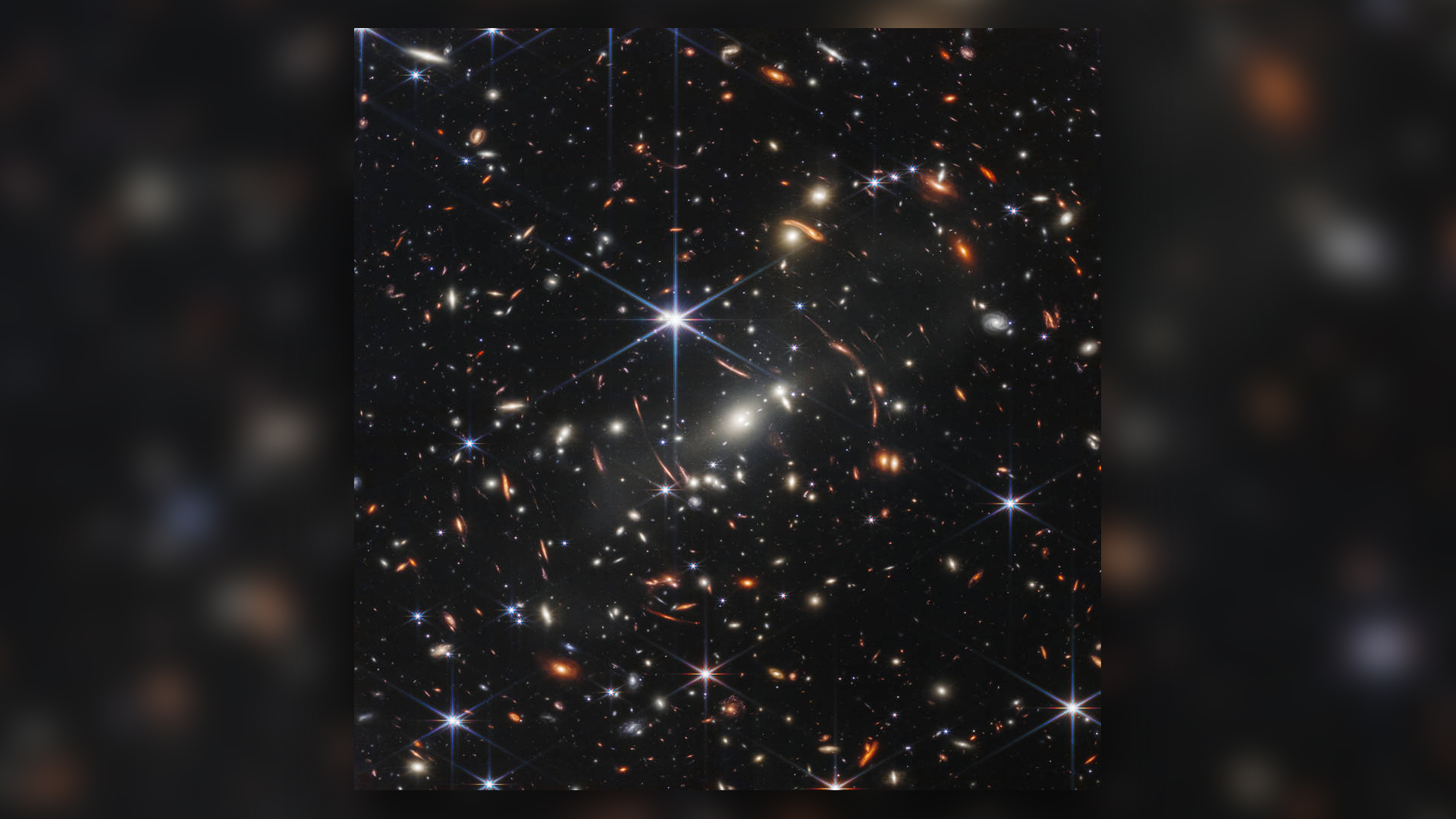The ability to see the beauty of the cosmos, as revealed by telescopes like the James Webb, puts me in awe. The vastness of this universe and its visual beauty thrills the imagination. Even the level of technological design success in bringing these images home to Earth is cause for amazement.
NASA has released the first suite of images from the newly operational James Webb Space Telescope, revealing the wonders of our universe in more detail than ever before.
Stars explode in spectacular orange and blue light. Galaxies writhe and dance around each other in a tangle of dust and baby stars. An alien planet pulses with haze. Some of the oldest light in the known universe — emitted more than 13 billion years ago — bends around massive potholes of gravity to shine before our eyes, clear as day.
“Every image is a new discovery and each will give humanity a view of the universe never seen before,” NASA administrator Bill Nelson said in a press conference today (July 12) before revealing the images. “This telescope will be able to penetrate dust clouds and see light from the far corners of the universe.”
But to showcase the telescope’s capabilities today, NASA — along with representatives from the European Space Agency and the Canadian Space Agency — released five debut images of fascinating objects located a little closer to home.
Stephan’s Quintet, a galactic party of 5

Webb’s first targets include Stephan’s Quintet, a group of five tightly-bound galaxies located 290 million light-years away in the Pegasus constellation. Four of the tight-knit galaxies continuously swoop past one another in a dangerous dance of near-collisions, NASA said.
The incredibly crisp new image reveals that two of the galaxies are actually in the process of merging into each other. Gouts of gas and dust heat up between the colliding galaxies, resulting in the creation of new stars.
Studying galaxy groups like this could help scientists better understand how gravity behaves at the largest scales, possibly yielding insights about the mysterious substance known as dark matter — an invisible, massive entity that’s thought to hold much of the universe together.
The Carina Nebula, a cosmic baby boom

Another stunning image showcases the Carina Nebula, a bright and gassy hotbed of star formation located approximately 7,600 light-years from Earth in the southern constellation Carina. The nebula is one of the most active star-forming regions ever discovered, Live Science previously reported, and is home to many stars much larger than our sun.
Scientists have studied this nebula extensively, but the new image reveals the “cosmic cliffs” of Carina in more stunning detail than ever before. Hundreds of newborn stars, previously invisible to telescopes, shine throughout the gassy landscape of the nebula. Jets and eddies of dust swirl through the image, creating strange structures that scientists can’t even identify, according to NASA.
Studying nebulae like Carina, scientists will uncover fresh insights into the birth of stars, perhaps even exploring the origins of our own solar system.
Webb’s Deep Field, the deepest image of the universe EVER

The image shows the deepest view of the universe ever captured, revealing light that was emitted 13.5 billion years ago — very near the estimated beginning of the universe, roughly 13.8 billion years ago, according to NASA.
These full-color images are the culmination of NASA’s 20-year project to launch a next generation space observatory to succeed the iconic Hubble Space Telescope. Costing nearly $10 billion to build, the Webb telescope is approximately 100 times more powerful than the Hubble, and capable of capturing incredibly crisp images of cosmic objects located billions of light-years away.
Please refer to the Live Science article for more images and descriptions.